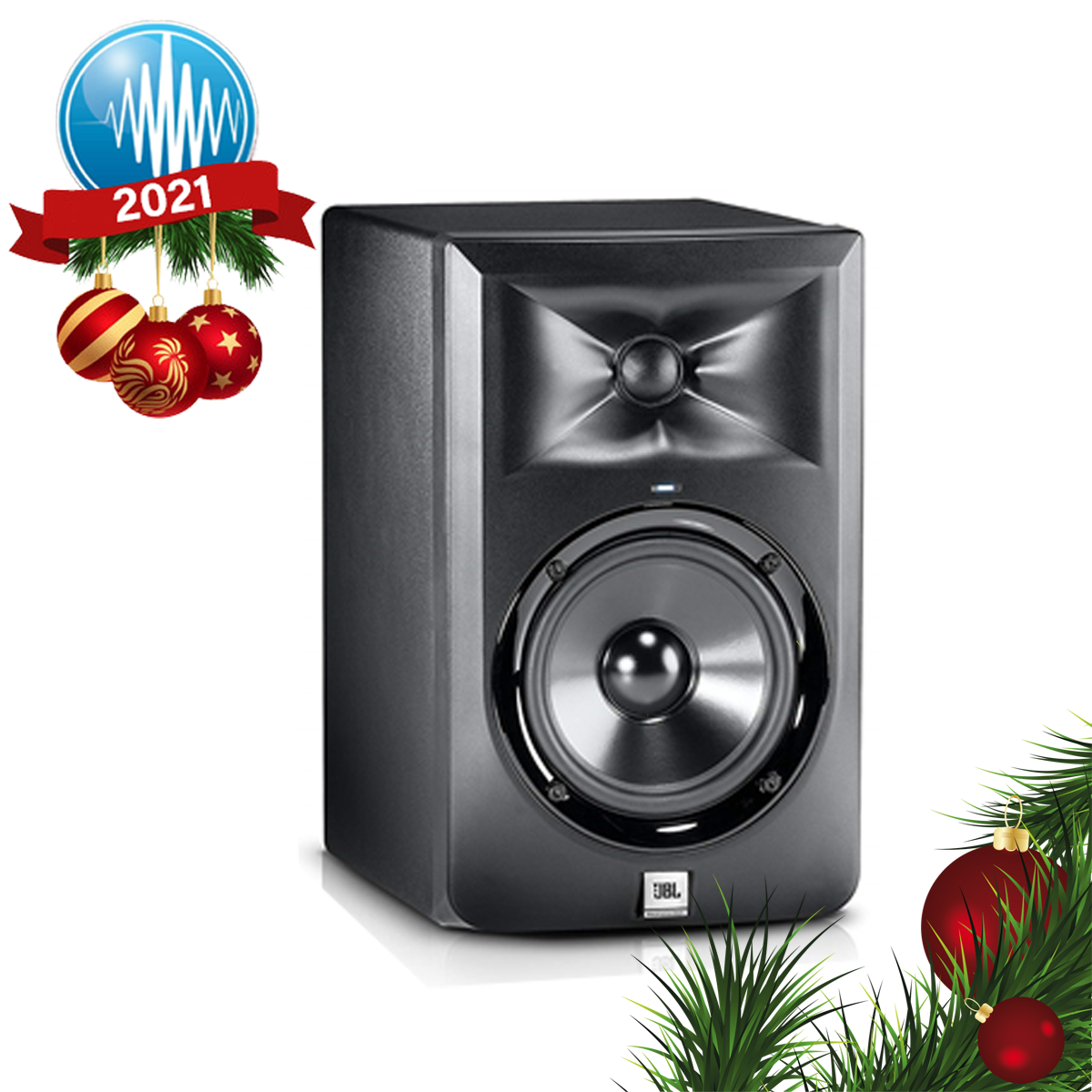Studio monitors are not strictly for sound engineers or recorders but also to amateur producers or a great way to spice up the home theatre system. The market is saturated as to the companies that provide studio monitors. Each has its own qualities or gimmicks. But there are things that are certain when shopping for a studio monitor; the sound quality it delivers. Now how does the 305p Mk II draw the line towards its competitors?
What is JBL 305p Mk II?
JBL has been a pioneer in sound engineering. Founded in 1946, it has been one of the companies that raised the standards when it comes to acoustics. The company is well known for its speakers, headphones, headsets, and related accessories.
As JBL yearly innovates to provide better options for recorders, musicians, sound engineers, producers, and the audiophile, it introduced the JBL 305p Mk II. It’s predecessors provided a good competitor for the studio monitor line. Now, it’s the 305p Mk II’s time to shine.
What are the features of the JBL 305p Mk II?
Overall design | Durability | Sound performance | Affordability |
|---|---|---|---|
Weighing only 4.73 kilograms (10.43 lbs) this could be considered lightweight as to studio monitors are concerned. This makes the 305p MkII portable and can be transferred with less hassle. | The material used is PVC, allowing the 305p Mk II to be durable but at the same time lightweight. PVC is a great material due to the fact that it can stand against the usual wear and tear. | As to power, it has 56 Watts per driver. Volume levels demand an average of 41w. The 305p Mk II still provides an excess, thus can play higher volume levels. Playing with higher volume levels indicate more precise work possibly avoiding distortions. | JBL 305 Mk II is indeed a trendsetter. A combination of new technology and proven engineering allow the 305p Mk II to be a competitive studio monitor. Despite all the tech involved the price tag is even lower compared to other competitors. Despite the lower price, the clarity and definition it provides are above the expected quality. |
This feature set is usually found on sound monitors with a premium price tag. Do note that the Image Control Waveguide was a bit challenging to tweak to our preferences at first. Read up the user manual first before changing any setting.
What We Liked
What We Didn’t Like
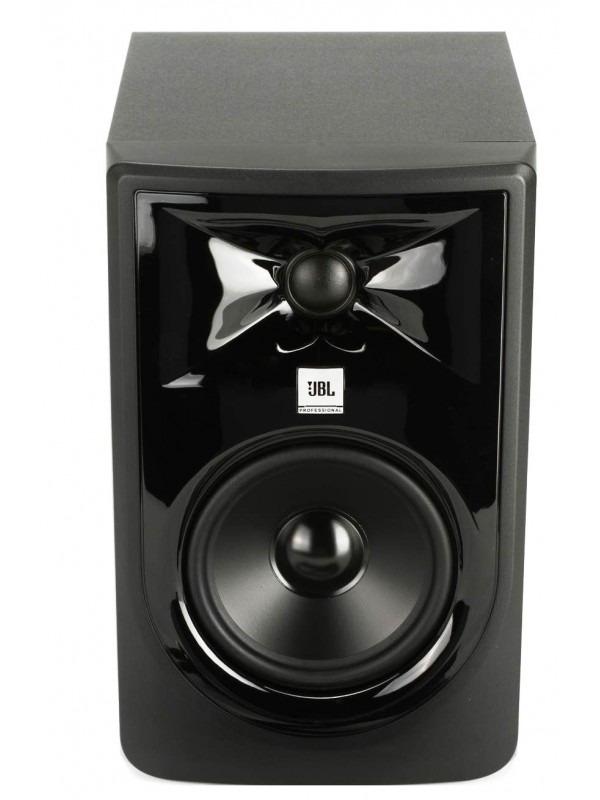
What to Expect From KBL 305p MK II?
Internal Specs
In producing a sound, it requires a frequency. The average threshold for human hearing is between 15 Hz to 18,000 Hz. A low rumble can be heard in 50 Hz while a hiss can be recognized in 12,000 Hz. The low-frequency driver or the transducer size is 203mm or 5 inches while the high-frequency driver or tweeter is 25 mm or 1 inch made in the soft dome.
As to power, it has 41 Watts per driver. Volume levels demand an average of 20w. The 305p Mk II still provides an excess, thus can play higher volume levels. Playing with higher volume levels indicate more precise work possibly avoiding distortions. Higher wattage does not only equate to a higher volume level but also to a more defined and dynamic acoustic. This allows the 305p Mk II to be technically loud.
The drivers are also Class-D amps. Amplifier designers categorize amplifiers from Class A, a simple single amp, to Class G, a dream for every sound engineer. The different classes are Class A, AB, C, D, E, F, and G. What separates class D from its predecessors is that its power management is more efficient.
More efficient power management entails to a physically smaller amplifier without sacrificing quality and definition. This allows the 305p Mk II to have a higher volume level without the added size. The cabinets of the 305p MkII are ported. This means it can extend longer the lower frequencies. Extending the lower frequencies make the bass drop longer.
The 305p Mk II also has an Image Control Waveguide as well as the other 3 series of JBL. The Image Control Waveguide was derived from the more expensive M2 Master Reference Monitor of JBL. But due to the 3 series being more accessible to the general public, JBL decided to add the tech to the 305p Mk II.
The Image Control Waveguide manipulates waveform distribution. This allows the sound to be heard by a person anywhere in the room. Such innovative technology packaged in an affordable studio monitor.
The 305p Mk II is a bi-amp configuration. A bi-amp works with two separate amplifiers wherein each is used to adjust the high and low frequency. Generally, bi-amp configuration delivers a more defined sound due to the fact that due to more accurate frequency response. The more accurate the frequency response, the more able to produce a dedicated frequency for each amplifier. This power configuration is present and standard the 3 series of JBL.
JBL 305p Mk II is indeed a trendsetter. A combination of new technology and proven engineering allow the 305p Mk II to be a competitive studio monitor. Despite all the tech involved the price tag is even lower compared to other competitors.
Despite the lower price, the clarity and definition it provides are above the expected quality. Sound engineers revel on the fact that the JBL 305p MK II that it allowed above par specs in a small package. It is unexpectedly loud for its size thanks to the Class D amp that it included.
It even provided a higher wattage compared to the market standard to give the user a better feel on their work or experience samples that can never be heard in a 20w amplifier. The inclusion of the Image Control Waveguide is one of the game changers for the 3 series. A tech from a fairly expensive studio line of JBL installed in the 3 series, it surprised the amateur and sound engineers alike.
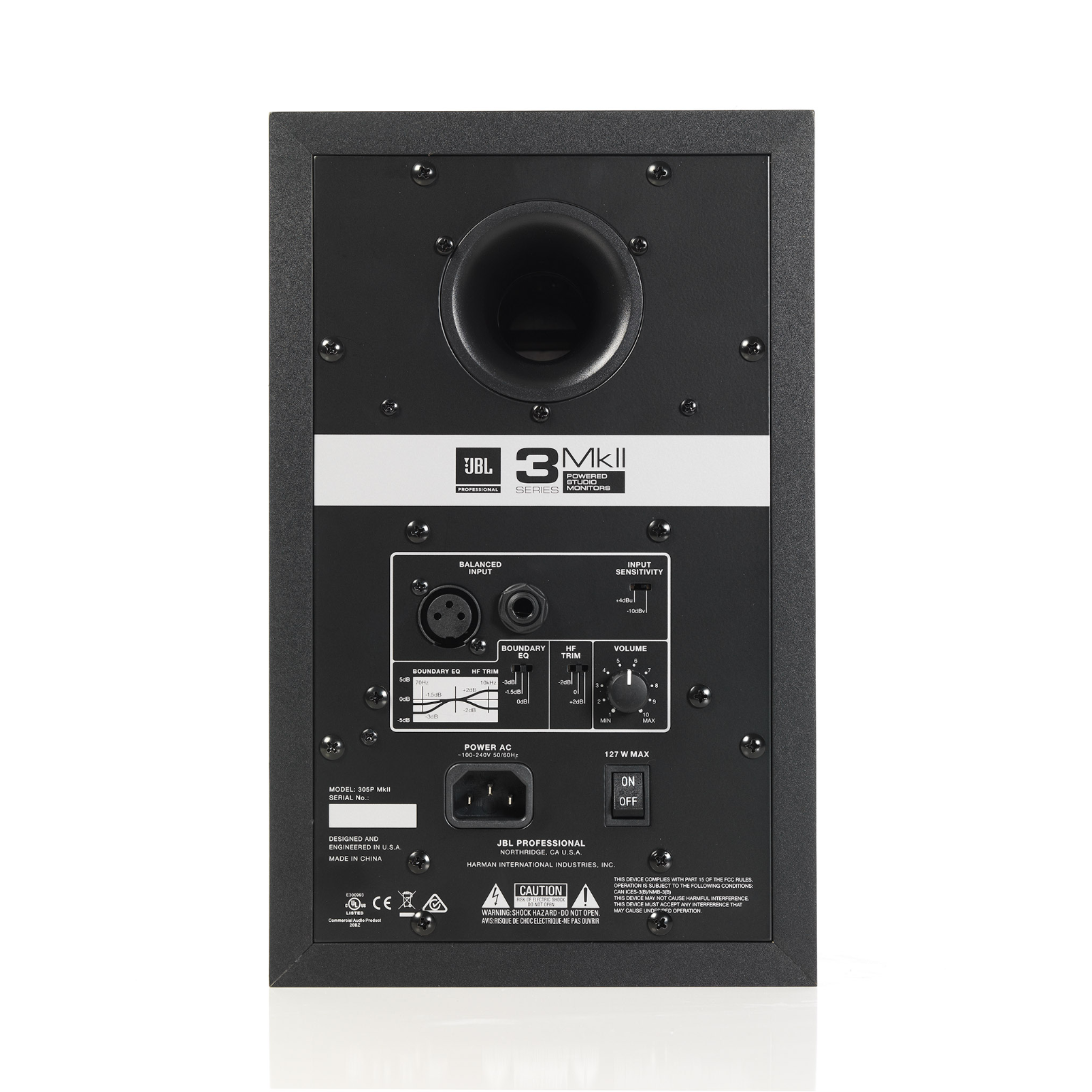
Sound Quality (With Real Testing)
Purist audiophiles shy away from your typical speakers that just has a strong bass but lacks clarity. The JBL 305p Mk II provides a versatile sound that can accommodate all types of songs and sounds. Our team tested the speaker in three scenarios: play it with tester tracks (or songs that are usually played to test a device’s sound quality), play it with live instruments, and play it with films.
In the first scenario, we picked 4 commonly used tester tracks: Miles Davis’ So What for bass control, Queen’s Bohemian Rhapsody for vocal clarity, Beethoven’s Symphony No. 9 for dynamic range, and Radiohead’s The National Anthem for sonic balance. Every song sounded crisp yet deep.
The classic jazz track of Miles Davis showcased how the speaker can handle extreme low frequencies as required by the track’s deep shifts to trumpet to piano.
Playing the rock songs Bohemian Rhapsody and The National Anthem with the speaker was among our favorite testing experience. We knew via the former track that the speaker renders human voice organically rather than making it sound like processed and muffled. The latter track filled the room with the extremely pinpoint-accurate quality especially in the 2-minute mark of the song where the bass and drums exchange at each other to make a trance-like sound.
In the case of Symphony No. 9, the speaker handled all lows and highs excellently. Just like with jazz songs, classical music played well and sounded full in the 305p MkII. In our experience, other speakers cannot handle lower frequencies well that it seems like there is no sound coming out of the speaker during these moments.
In the second scenario, we tuned a Fender Telecaster using the speaker. Every note was enunciated well enough that even a non-trained ear can know if it is in tune or not. We also used keyboards and its different effects to test if it can handle a various range of sounds. The short answer is yes.
In the third scenario, we tested the speaker by playing Cristopher Nolan’s war Drama “Dunkirk.” This was our favorite scenario since we did not expect that the speaker would fill out the room with the sounds in war, even making us feel we were there. From the gutting sound of machine guns to the booming sound of the planes, the speaker elevated the viewing and listening experience we had for the film.
From those who have zero to minimal experience with sound monitors (or studio-grade speakers), you will immediately notice that the same song will sound better overall compared to it being played on typical run-off-the-mill speakers at clubs.
The speaker is a 5 inch variant. When it comes to speakers, the bigger is always better. We recommend you also purchase JBL LSR310S Powered Studio Subwoofer (which is bigger than the speaker by 2 inches) which increases the capacity of the speaker to handle even lower frequencies. Think of birds chirping or muffled footsteps, a sound system with a proper subwoofer can pronounce these subtle sounds clearly.
We noticed that its lows were controlled rather than being scattered, the mids were well pronounced rather than being muffled by the bass, and the highs were bright making it a good speaker to play musicals and operas.
There is a reason why the JBL 305p Mk II, this sub-$109 speaker will bring the best sonic quality out of your songs for years.
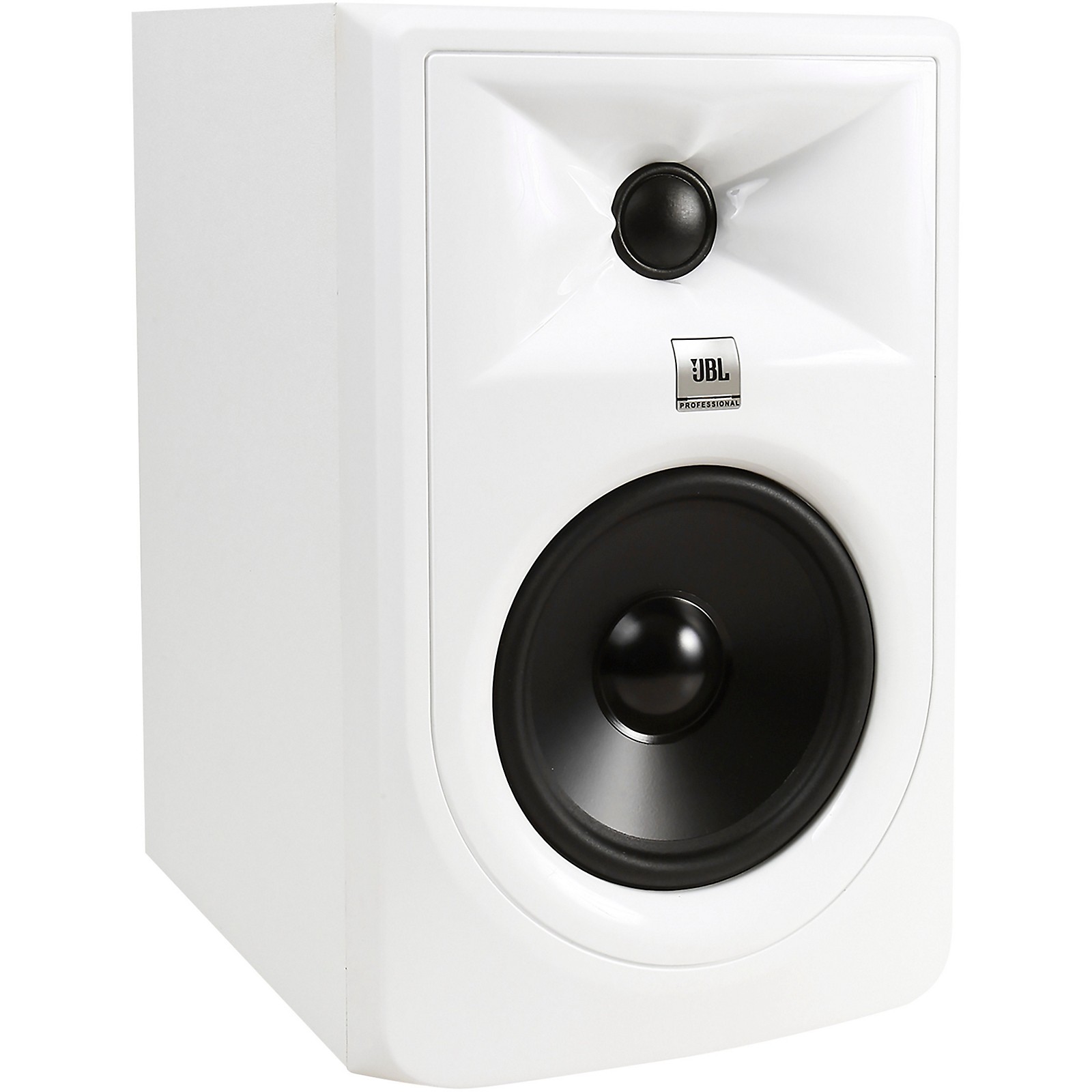
Awards and Recognition
One of the many reasons our team were keen on reviewing this item was because of its awards. We were enthusiastic to give this machine a try, a machine that pro-musicians and sound engineers have picked over the others
The JBL 3 Series Mk II - which the JBL 305p Mk II is a member of - won the 2019 TEC Award in the Studio Monitors in the 34th NAMM TEC Awards. Considered to the Oscars of the audio and sound recording industry, NAMM TEC gives recognition to the pioneers in the field. The series also won awards in the 33rd annual Music and Sound Awards.
How to Setup the JBL 305p MKII?
Watch this easy to follow video on Youtube that shows the unboxing and setup of the JBL 305p MK II:
What is the alternative to the JBL 305p MKII?
The $200-$400 range in speakers may have the best speakers with the excellent price-to-quality ratio. You are upgrading from the beginner range of $100 speakers but also entering the build and sound quality of $800+ speakers. You get the best of both worlds: affordability and performance.
For the intermediate listeners with an ear accustomed to the top-notch sound, there are other speakers that are in level with the JBL 305p Mk II. These may be the Yamaha’s NS-6490 and NS-333, Polk Audio’s RTI A1, or the Klipsch’s R-15M.
This speaker tops out the others in terms of its features mentioned earlier such as its Image Control Waveguide, JBL's patented Slip Stream low-frequency port, and low-level transducers. Aside from that, you get the reliability of JBL with their excellent after-sales service.
Who Is JBL 305p MKII for?
There is the right speaker for everybody, but the JBL 305p Mk II may be right for you. If you are looking for a speaker or a sound monitor with a reasonable price, cutting edge technology, rugged build quality, and with a reputable brand, this speaker is for you.
We can vouch on the speaker since we have used it for weeks already and it does its job excellently. Other speakers were too advanced for our tastes that it was hard to use and other speakers were just too limited in their feature set that we should have opted for a cheaper speaker with the same features.
Personally, the speaker fits for those looking into their first serious speaker that will last a long time without spending too much. Think of it as your gateway speaker to other more high-grade speakers. Note that a speaker is best used with a high-quality sound file and a capable amplifier.
Another thing I want to add is that this speaker is big and chunky. If you have limited room in your living space, consider getting the smaller variant. Those using JBL products already like their headphones and Bluetooth speakers can attest to the company’s fool-proof engineering of their products.
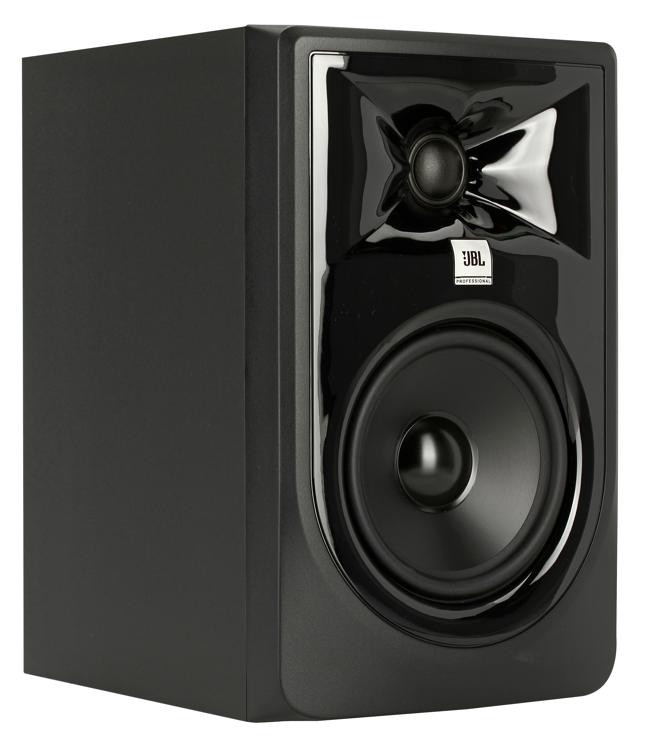
Conclusion
Overall, our team liked the JBL 305p MkII sound monitors in every way possible. Its accessible price makes it affordable to those getting serious with their audio while its advanced engineering makes will not make the machine feel and sound dated over the years.
If there was something we would change, it would be the loaded feature set that intimidated us first. However, for people transitioning to plain bookshelf speakers to studio sound monitors, this is expected. As you dive in the hobby of sound and audio, you will be thankful that you have a modular-type speaker that can be made fit into different sounds in different situations.
A speaker’s build quality is as important as its sound quality. The construction feels rugged and tight that we know this was inspected to the last wire before getting out of the factory. Longevity is important in speakers. It is important to be mentioned that we have also tried other speakers before and during the review. That is why we can provide a detailed review of the product since we know how it compares to other similar products.
We are excited for you to give this speaker a try. If you are considering being a rookie audiophile, better to play Free Lossless Audio Codec (FLAC) files with your speakers. Unlike mp3 files which most of our music is, FLAC files preserve the dynamic range of the song making it closer to the raw sound of the song right out of the studio.
We give it 9/10 stars. This is a speaker that has impressed everyone in our team and will surely be considering it a classic over time.

